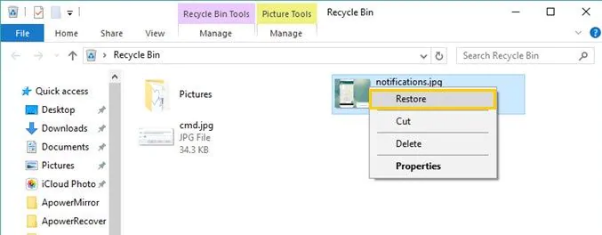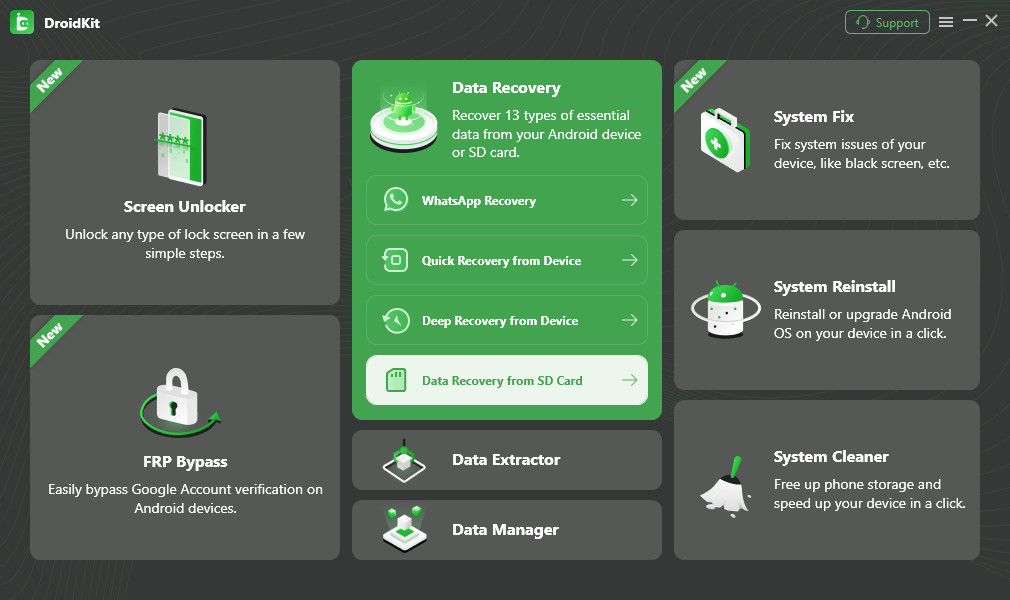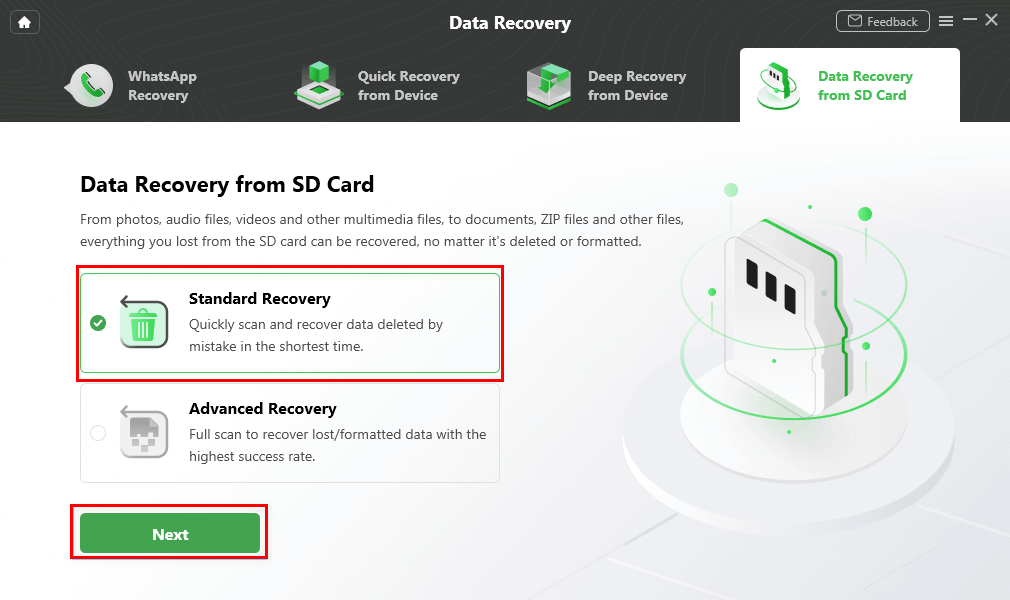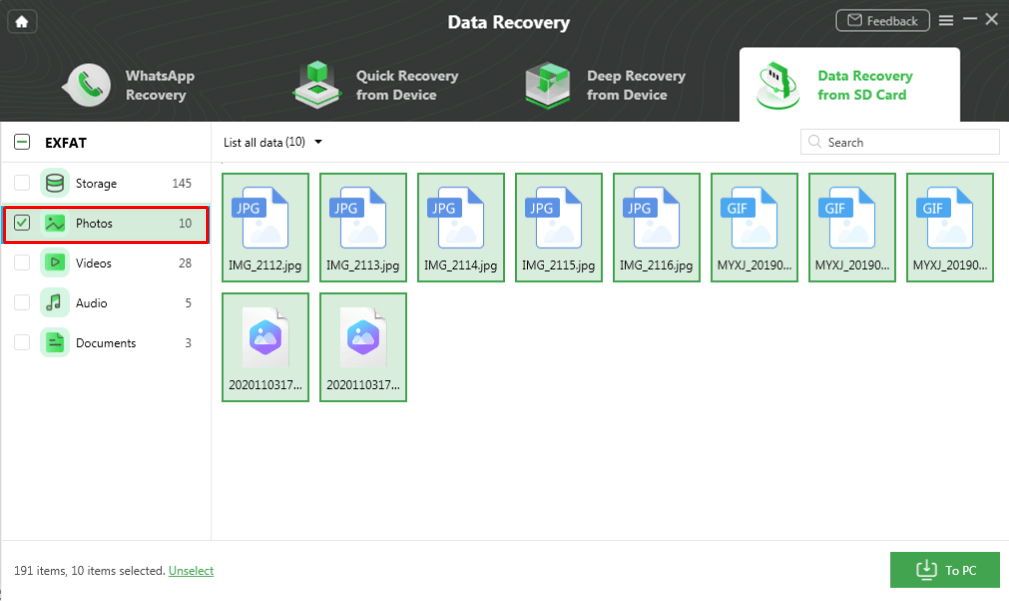How to Recover Deleted Files from USB Flash Drive 2025
Recovering deleted files from your USB flash drive is no big deal. Discover how to bring back your deleted files from your USB flash drive, including the permanently deleted ones, by reading through this comprehensive guide shared in this post.
Hi there, I mistakenly wiped some files from my USB flash drive. These files are crucial to me, and I need to retrieve them right away, but I don’t know how to go about it. Please, how do I recover deleted files from a USB flash drive?
Loss of data files from a USB flash drive is a common event. This could happen due to accidental deletion, damaged/corrupt drive, etc. The frustration that comes with this event is unexplainable, especially when the files are crucial to you.
However, you can’t remain in such a state forever. Cheering up and sourcing for a way to retrieve the deleted files is the next thing to do. In this post, we will look at the various ways to retrieve deleted files from a USB flash drive easily and quickly. Stick around and let’s get started!
Recover Deleted Files on USB Flash Drive from Previous Versions
Using the Restore from Previous Versions feature, you can recover your deleted files on a USB flash drive. This feature was tucked into Windows OS 7, 8, 10 and 11 with the sole purpose of helping end-users to retrieve missing or deleted files without installing any third-party software.
However, for this solution to work effectively, there is a condition you must satisfy. The condition is given down here:
Ensure that you have enabled the Restore from Previous Versions feature before the deletion of any files from your USB flash drive.
Once you’ve satisfied the above, follow the instructions below to bring back those deleted files on your USB flash drive straight away:
Step 1: Connect the USB flash drive with the underlying issue to your PC via the appropriate port.
Step 2: Having completed the above, head to the lower left corner of your screen and hit the Start icon. Enter This PC in the search tab and hit the corresponding icon to proceed.
Step 3: On the left sidebar, you will find the connected USB flash drive. Right-click on the flash drive and choose Properties from the options that showed up.
Step 4: Next, navigate to where you have the Previous Versions tab at the top-menu bar to see the list of recoverable files. Select the files you will like to retrieve and click Restore to confirm your action.
Without delay, the recovery of the deleted files will commence.
How to Recover Deleted Files from USB Flash Drive Without Software
Perhaps you forgot to activate the Restore Previous Version feature before deleting the files from your USB flash drive, the following solutions below should also come in handy to help you retrieve the files without software:
Method 1. Using CMD
Command Prompt, also known as CMD is a Windows application you leverage on in a situation like this where you need to retrieve data files on your USB flash drive or pen drive. However, mind you, instead of deleted files, this solution helps you find missing or hidden data files. You can also use it to repair corrupt or damaged files.
There are no requirements to satisfy while using the CMD option to recover deleted files from a USB flash drive. Just follow the steps below and you are good to bring back your missing files:
Step 1: Start with establishing a connection between the USB flash drive and your computer. You can do this by attaching the USB to a port on your PC.
Step 2: Next, navigate your cursor to the bottom left corner, click on the search tab and enter CMD in the field provided. Right-click on the corresponding icon and select Run as administrator from the options shown.
Step 3: Now, enter the command line: chkdsk X: /f and hit the Enter button on your keyboard to send the instruction to your computer. Mind you, the letter X in the command line represents the USB flash drive. Please ensure the letter used matches what is used to represent your USB drive.
Input the command line: attrib -h -r -s G:\*.* /s /X and click Enter. (Again, the letter X represents the USB flash drive. It’s best you use the letter that corresponds with it to get an accurate result).
Method 2. From Recycle Bin
Recycle bin is a built-in feature that collects all deleted data files from a PC so when a situation warrants that you bring them back, you can do that without installing any third-party software. The feature is readily available on all Windows operating systems and it’s extremely easy to implement.
Prior to discussing the detailed stepwise guide to get this done, it’s imperative you note that deleted files are made available on your Windows computer for at most 30 days after which they will be permanently removed. In case the files you want to retrieve from your USB flash drive hasn’t crossed the said time-frame, follow these steps to retrieve them:
Step 1: Proceed to the lower left corner of your screen and input Recycle Bin in the search bar.
Step 2: Click on the corresponding icon.
Step 3: Mark the data files to recover from your computer, right-click and select Restore. Without delay, the selected data will be recovered on your computer.

Recover Videos from Windows Recycle Bin
Retrieve Deleted Files from USB Flash Drive with Windows File Recovery
Windows Files Recovery is a pre-installed program integrated by Microsoft to assist end-users with data recovery operation. So far you are using a PC running on Windows OS 10 and later, this solution should give the desired result. However, we do not guarantee the quality of your data files.
To retrieve deleted files from a USB flash drive using this option, apply the stepwise guide below:
Step 1: Install the most recent version of the Windows File Recovery program on your computer from Microsoft Store.
Step 2: Grab the USB flash drive and connect it to your computer via the appropriate port. Once done, proceed to the left sidebar and select This PC. Check and memorize your USB letter to proceed.
Step 3: Launch the Command Prompt as a prompt by entering CMD in the search bar at the bottom left corner of your home screen. On the subsequent interface, input Winfr E: C: /extensive and tap on the Enter button. (The letter E and C represent the name of your USB flash drive and the path where the recovered data is stored respectively).
Step 4: Wait patiently until the recovery process is completed.
How to Recover Deleted Files from USB Flash Drive Using File Recovery Software
While recovering your data files using the options above easy and cost-free, you will likely encounter some restrictions or challenges. Some of them include inability to retrieve gigabytes of data at once, depreciation of data quality, and more. To avoid this, a file recovery software like DroidKit could come to your rescue.
DroidKit is an elegant data recovery software loaded with incredible features required to bring back lost or missing data files from a USB flash drive. It’s capable of retrieving over 13+ types of data including photos, videos, music, and a host of others. This software boasts of the highest data recovery success rate as it retains your file quality while retrieving them. You don’t need any tech skill to use this software. DroidKit is nicely designed with a comprehensive interface.
Key Features
- 1-click to retrieve temporarily and permanently deleted files from a USB flash drive.
- Handles over 13+ types of data including music, text, photos, videos and more.
- Applicable for recovering data management, WhatsApp recovery, OS update/downgrade, system repair, screen unlock, FRP bypass and more.
- Transfer photos from Android to Android, Android to iOS and Android to PC/Mac without hassles.
Guide to Recover Deleted Files from USB Flash Drive DroidKit
Follow the steps down here to get back those deleted files from your USB flash drive using DroidKit:
Step 1: Install DroidKit on your PC from the official website. Launch the software afterwards and select Data Recovery from SD Card. Once down, get your USB Drive connected to the PC. To do this, you need a card reader.

Restore Data from SD Card
Step 2: On the subsequent screen, you will be required to select a recovery mode. Choose Standard Recovery from the options provided by the software. Afterward, click on the green Next icon.

Choose Standard Recovery
Step 3: Tap on Next again and DroidKit will proceed to scanning your USB flash drive for the recoverable files. Wait for that to finish and the screen below will appear.

Select Data and Click To PC
FAQs
What to do if USB flash drive not recognized?
In case your USB flash drive isn’t recognized by your PC, here are some handy solutions to resolve the issue:
- Change the USB cable or card reader.
- Reboot your computer.
- Use Command Prompt.
- Update your Disk driver.
- Scan the USB flash drive for virus or malware.
Can I recover data from a damaged flash drive?
Yes. It’s possible to recover data from a damaged flash drive. There are multiple ways to go about this. Some of them include:
- With the aid of third-party software.
- Recycle bin.
- Windows File Recovery.
Final Words
Recovering deleted files from a USB flash drive has never been this easy. Now that you have this guide at your disposal, you can bring back those crucial files you mistakenly deleted from your USB flash drive without hassles.

Joy Taylor


Senior writer of the iMobie team as well as an Apple fan, love to help more users solve various types of iOS & Android-related issues.
Screenify
AnyEnhancer
FocuSee
Vozard
AnyMiro
AnyMirror





